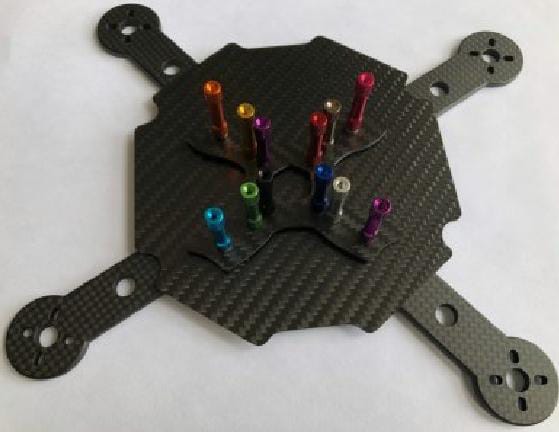
Mastering the Art of Cutting Carbon Fiber Drone Frames
Carbon fiber is the preferred material for many drone enthusiasts due to its exceptional strength-to-weight ratio, making it ideal for drone frames. However, working with carbon fiber can be challenging, especially when it comes to cutting it effectively. In this comprehensive guide, we will delve into the intricate process of cutting carbon fiber drone frame with precision and safety, ensuring your drone frame is both robust and lightweight.
Why Choose Carbon Fiber for Drone Frames?
Before we get into the specifics of cutting carbon fiber, it’s important to understand why this material is favored for drone frames:
Unmatched Strength: Carbon fiber boasts an exceptional strength-to-weight ratio, providing a strong and resilient structure for your drone.
Lightweight Advantage: Its low weight ensures your drone remains agile and nimble, which is crucial for maneuverability and flight performance.
Durability: Carbon fiber’s ability to withstand impacts and crashes is a key attribute, ensuring the longevity of your drone frame.
Tools and Materials You’ll Need:
To successfully cut carbon fiber for your drone frame, you’ll need a set of essential tools and materials:
Carbon Fiber Sheet: Ensure you have the appropriate thickness and size of carbon fiber sheet that matches your frame design.
Safety Gear: Prioritize your safety by wearing safety goggles, a dust mask, and gloves to protect against carbon fiber dust and shards.
Cutting Tools: Choose from these common options based on your specific cutting needs:
Rotary Tool with Cutting Wheel: Ideal for straight cuts and small details.
Hacksaw: Perfect for cutting thicker carbon fiber sheets.
Dremel or Oscillating Multi-Tool: Offers versatility for various cuts, especially for intricate or curved shapes.
Workbench: You’ll need a stable work surface that can securely hold your carbon fiber sheet in place.
Clamps: Use clamps to secure the carbon fiber sheet firmly to your workbench. This prevents any unwanted movement during the cutting process.
Measuring Tools: Gather a ruler, tape measure, and a square to ensure accurate measurements and markings.
Step-by-Step Guide to Cutting Carbon Fiber Drone Frames:
Now, let’s break down the process into a series of detailed steps to help you cut carbon fiber for your drone frame with precision:
Safety First: Before you begin, don your safety gear – safety goggles, a dust mask, and gloves are essential to protect yourself from potential harm.
Measure and Mark: Use your measuring tools to carefully mark the cutting lines on the carbon fiber sheet. Double-check your measurements to ensure precision.
Secure the Sheet: Use clamps to firmly secure the carbon fiber sheet to your workbench. This is crucial to prevent any movement during cutting.
Choose the Right Cutting Tool:
If you are making straight cuts, a rotary tool with a cutting wheel or a hacksaw is well-suited for the task.
For intricate cuts or curves, opt for a Dremel or oscillating multi-tool equipped with a fine-toothed blade for greater precision.
Cut with Care: Begin cutting along the marked lines, applying even pressure throughout. Avoid rushing; a slow and steady pace is essential for achieving a precise cut.
Control Dust and Debris: As you work, carbon fiber dust and debris may accumulate. Utilize a vacuum cleaner or compressed air to remove this material, maintaining a clean workspace.
Check for Fraying: Carbon fiber can be prone to fraying at the edges when cut. To prevent this, consider applying masking tape over the cut line before you start cutting. This will help reduce fraying.
File and Sand: After completing the cut, use a fine file or sandpaper to smooth the edges and eliminate any remaining burrs. This step ensures a clean and polished finish.
Inspect Your Cut: Take a moment to inspect your cut. Verify that it is straight, clean, and meets your desired specifications. If any adjustments are necessary, make them now.
Conclusion:
Cutting carbon fiber for drone frames requires a combination of precision, patience, and a strong commitment to safety. When executed correctly, this process yields lightweight, durable, and robust frame components that enhance your drone’s overall performance and longevity. Always prioritize your safety, adhere to protective gear requirements, and take your time to ensure the best possible results when cutting carbon fiber. With practice, you will become proficient in this essential skill, providing you with the means to create high-performance drone frames for your aerial adventures.



